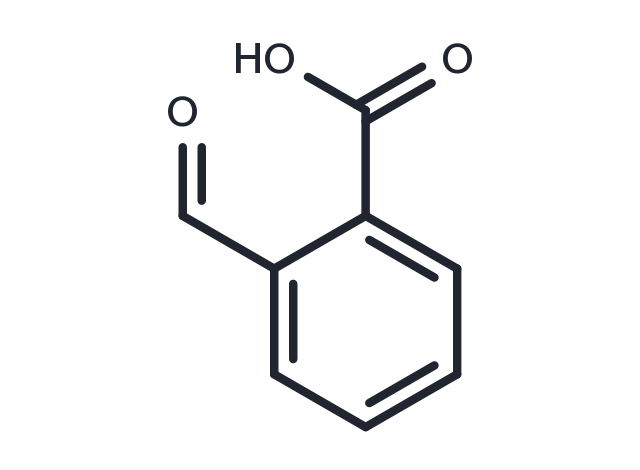Powder: -20°C for 3 years | In solvent: -80°C for 1 year


The major peak of 2-Carboxybenzaldehyde reductase activity in human liver co-purifies with hAFAR protein. Sulphydryl substances and some proteins play important roles in preserving the molecular and catalytic properties of 2-Carboxybenzaldehyde reductase.

| Pack Size | Availability | Price/USD | Quantity |
|---|---|---|---|
| 50 mg | 5 days | Inquiry | |
| 100 mg | 5 days | Inquiry |
| Description | The major peak of 2-Carboxybenzaldehyde reductase activity in human liver co-purifies with hAFAR protein. Sulphydryl substances and some proteins play important roles in preserving the molecular and catalytic properties of 2-Carboxybenzaldehyde reductase. |
| In vitro | 1. A rat liver cytosol enzyme, tentatively named CBA reductase, catalyses the conversion of 2-Carboxybenzaldehyde (CBA) to 2-hydroxymethyl benzoic acid in the presence of NADH (or NADPH). CBA reductase is useful for exploring the mechanism of in vitro enzyme induction, as the enzyme can be induced by phenobarbital (PB) both in vivo and in vitro. METHODS AND RESULTS:2. Possible involvement of glutathione (GSH) in gene expression was suggested by a recent study with cultured rat hepatocytes. 3. CBA reductase was purified about 200-fold by a combination of column chromatography and isoelectric focusing in the presence of mercaptoethanol. 4. The ability to form 2-hydroxymethyl benzoic acid was lost when the enzyme was chromatographed on a hydroxylapatite column in the absence of mercaptoethanol; however, it was restored if sulphydryl compounds or bovine serum albumin was added to the eluate from the column. 5. Gel filtration showed the molecular sizes of CBA reductase from the 105,000g supernatant fraction of rat liver extracts and the purified preparation were 64 kDa and 49 kDa, respectively. CONCLUSIONS:6. The results suggest that sulphydryl substances and some proteins play important roles in preserving the molecular and catalytic properties of CBA reductase. |
| Source |
| Molecular Weight | 150.13 |
| Formula | C8H6O3 |
| CAS No. | 119-67-5 |
Powder: -20°C for 3 years | In solvent: -80°C for 1 year
You can also refer to dose conversion for different animals. More
bottom
Please see Inhibitor Handling Instructions for more frequently ask questions. Topics include: how to prepare stock solutions, how to store products, and cautions on cell-based assays & animal experiments, etc.
2-Carboxybenzaldehyde 119-67-5 2Carboxybenzaldehyde 2 Carboxybenzaldehyde inhibitor inhibit
